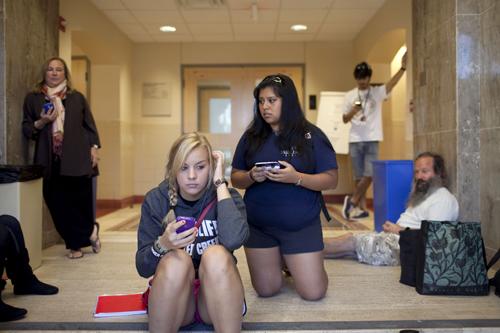Tragedies such as the recent on-campus shooting at the University of Texas force campus communities to look at their own crisis plans, and learn from the successes and failures of other plans.
Loyola’s crisis communications plan is a guide that the university uses in times of crisis to find the best possible method of getting a warning message out to students.
The plan received the Case Award of Excellence in 2010.
Meredith Hartley, director of Public Affairs and creator of Loyola’s crisis communications plan, is one of the first people notified in case of a crisis.
“The police department is notified of the situation, they respond immediately to the incident to verify and assess the situation,” Hartley said.
“If they determine there is a threat to our campus, they’re going to call the president and they’re going to call me to let me know what’s going on and then we’re going to shoot out information.”
The university uses a multi-tiered system to send messages to students, staff and faculty.
Messages are sent through text messages, phone calls sent to both cell phones and campus phones, Twitter, Facebook and the university website.
“You don’t put all of your eggs in one basket, you rely on several different communication methods,” Hartley said.
A test of the emergency response message system was performed Sept. 28.
During the test, 4,156 students and 555 faculty members were sent messages and of those, 302 did not receive the warning.
Hartley said the university is working to find out why the messages did not go through. Various reasons have been found including wrong phone numbers or home phone numbers given instead of cell phones.
Bret Jacobs, vice provost for Information Technology and chief information officer, said that testing the system is crucial for its improvement.
“Periodically testing our emergency notification systems allows us to identify any areas which require improvement,” Jacobs said.
The Sept. 28 test has already helped the university plan ahead, Hartley said. “We learn every time we test something,” Hartley said.
“So next time, if we do this in an emergency, we’re going to send out phone messages first because they’ll get that faster than a text.”
It takes around three minutes to draft and send out the message in case of a crisis, according to Hartley.
“We do have a small campus, so word travels fast. But in a situation like that, you just have to work as fast as you can,” Hartley said.
“I don’t know if there’s ever fast enough.”
To respond to an on-campus threat, university police are trained to handle crisis situations such as a shooter on campus.
According to Richard Bell, director of risk management, “Our police department has had very specific training in dealing with such shooting situations,” Bell said.
“We’ve incorporated guidance from the FBI and other agencies in our planning for such a response if needed.”
Hartley is confident that with the crisis communication plan in place and with university police’s training, Loyola is a much safer campus.
“You never know how you’re going to react in an emergency,” Hartley said.
“There’s a fight or flight reaction sometimes and you don’t know which one it’s going to be, but I think we’re prepared to fight.”
Sam Winstrom can be reached at sdwinstr@loyno.edu






